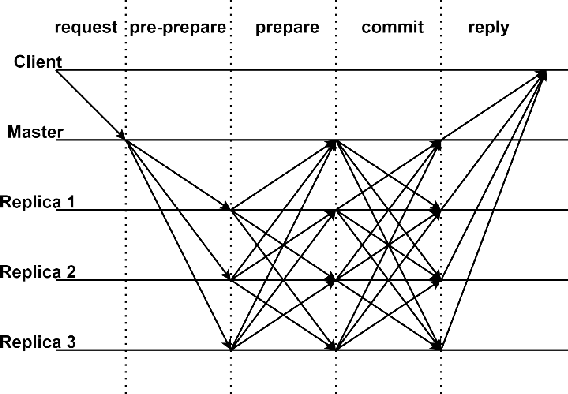Long Luo
Learning in Chaos: Efficient Autoscaling and Self-healing for Distributed Training at the Edge
May 19, 2025Abstract:Frequent node and link changes in edge AI clusters disrupt distributed training, while traditional checkpoint-based recovery and cloud-centric autoscaling are too slow for scale-out and ill-suited to chaotic and self-governed edge. This paper proposes Chaos, a resilient and scalable edge distributed training system with built-in self-healing and autoscaling. It speeds up scale-out by using multi-neighbor replication with fast shard scheduling, allowing a new node to pull the latest training state from nearby neighbors in parallel while balancing the traffic load between them. It also uses a cluster monitor to track resource and topology changes to assist scheduler decisions, and handles scaling events through peer negotiation protocols, enabling fully self-governed autoscaling without a central admin. Extensive experiments show that Chaos consistently achieves much lower scale-out delays than Pollux, EDL, and Autoscaling, and handles scale-in, connect-link, and disconnect-link events within 1 millisecond, making it smoother to handle node joins, exits, and failures. It also delivers the lowest idle time, showing superior resource use and scalability as the cluster grows.
Performance Analysis of Non-ideal Wireless PBFT Networks with mmWave and Terahertz Signals
Mar 28, 2023



Abstract:Due to advantages in security and privacy, blockchain is considered a key enabling technology to support 6G communications. Practical Byzantine Fault Tolerance (PBFT) is seen as the most applicable consensus mechanism in blockchain-enabled wireless networks. However, previous studies on PBFT do not consider the channel performance of the physical layer, such as path loss and channel fading, resulting in research results that are far from real networks. Additionally, 6G communications will widely deploy high frequency signals such as millimeter wave (mmWave) and terahertz (THz), while the performance of PBFT is still unknown when these signals are transmitted in wireless PBFT networks. Therefore, it is urgent to study the performance of non-ideal wireless PBFT networks with mmWave and THz siganls, so as to better make PBFT play a role in 6G era. In this paper, we study and compare the performance of mmWave and THz signals in non-ideal wireless PBFT networks, considering Rayleigh Fading (RF) and close-in Free Space (FS) reference distance path loss. Performance is evaluated by consensus success rate and delay. Meanwhile, we find and derive that there is a maximum distance between two nodes that can make PBFT consensus inevitably successful, and it is named active distance of PBFT in this paper. The research results not only analyze the performance of non-ideal wireless PBFT networks, but also provide an important reference for the future transmission of mmWave and THz signals in PBFT networks.
HFedMS: Heterogeneous Federated Learning with Memorable Data Semantics in Industrial Metaverse
Nov 07, 2022



Abstract:Federated Learning (FL), as a rapidly evolving privacy-preserving collaborative machine learning paradigm, is a promising approach to enable edge intelligence in the emerging Industrial Metaverse. Even though many successful use cases have proved the feasibility of FL in theory, in the industrial practice of Metaverse, the problems of non-independent and identically distributed (non-i.i.d.) data, learning forgetting caused by streaming industrial data, and scarce communication bandwidth remain key barriers to realize practical FL. Facing the above three challenges simultaneously, this paper presents a high-performance and efficient system named HFEDMS for incorporating practical FL into Industrial Metaverse. HFEDMS reduces data heterogeneity through dynamic grouping and training mode conversion (Dynamic Sequential-to-Parallel Training, STP). Then, it compensates for the forgotten knowledge by fusing compressed historical data semantics and calibrates classifier parameters (Semantic Compression and Compensation, SCC). Finally, the network parameters of the feature extractor and classifier are synchronized in different frequencies (Layer-wiseAlternative Synchronization Protocol, LASP) to reduce communication costs. These techniques make FL more adaptable to the heterogeneous streaming data continuously generated by industrial equipment, and are also more efficient in communication than traditional methods (e.g., Federated Averaging). Extensive experiments have been conducted on the streamed non-i.i.d. FEMNIST dataset using 368 simulated devices. Numerical results show that HFEDMS improves the classification accuracy by at least 6.4% compared with 8 benchmarks and saves both the overall runtime and transfer bytes by up to 98%, proving its superiority in precision and efficiency.
 Add to Chrome
Add to Chrome Add to Firefox
Add to Firefox Add to Edge
Add to Edge